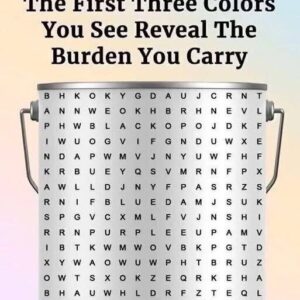With the recent announcement of King Charles’ illness and news of Kate Middleton’s upcoming planned abdominal surgery, attention across the United Kingdom and internationally has once again turned to the British Royal Family.
The combination of these health developments has prompted widespread curiosity, speculation, and concern, as observers consider not only the personal wellbeing of the monarch and Duchess of Cambridge but also how their respective conditions may influence the schedules, engagements, and responsibilities of senior members of the Firm.
While official statements describe King Charles’ illness as being closely monitored and managed under medical supervision, any health issue affecting the sovereign naturally carries significant implications, both within the Royal Family and across the Commonwealth realms.
Similarly, Kate Middleton’s scheduled surgery has sparked interest regarding the timing and recovery process, and whether it will necessitate adjustments to upcoming public appearances, ceremonial events, or royal tours.
Amid these unfolding circumstances, Prince Harry’s recent journey to the United Kingdom has drawn extraordinary attention.
Reports confirm that Harry traveled promptly after learning of his father’s illness, highlighting both the personal importance of the visit and the emotional urgency behind it.
According to multiple sources, it was King Charles himself who informed Harry of his health situation, a detail that underscores the private nature of their communication and the continuing bond between father and son, despite years of public scrutiny and reported tensions within the family.
The media, both in the UK and abroad, emphasized the significance of this direct communication, interpreting it as a sign of the royal family’s enduring commitment to certain traditions of closeness and confidentiality, even amid widespread public interest.
During the visit, Harry reportedly had the opportunity to see King Charles, though their encounter was described as brief.
Sources indicate that Harry was not permitted to accompany the King on a helicopter journey to the Sandringham estate, the royal family’s long-established retreat in Norfolk.
Sandringham has historically functioned as both a private residence and a place for recuperation, offering the monarch a secure and secluded environment away from public eyes.
The King has spent extended periods there between treatments and engagements, using the estate’s privacy to manage his health while remaining in proximity to trusted staff and security personnel.
This brief restriction on Harry’s presence during the helicopter transfer reflects the careful balance the Royal Family maintains between intimacy, tradition, and operational security — especially during moments when the sovereign is dealing with health concerns.
Despite the brevity of the meeting, sources suggest that the encounter carried emotional significance for both father and son.
Observers note that, while Harry has lived abroad since stepping back from official royal duties in 2020, certain circumstances — particularly those involving health, family care, or personal milestones — continue to prompt him to return to the UK.
The visit serves as a reminder that, even amid complex family dynamics, the bonds between immediate family members remain a priority, often superseding public disputes or media speculation.
In this case, Harry’s presence illustrates the enduring role of familial support, even when filtered through layers of royal protocol, security considerations, and international travel logistics.
The context surrounding this visit is also critical to understanding the broader picture of Prince Harry’s relationship with the Royal Family.
Since his departure from frontline royal duties, Harry has maintained a largely independent life in the United States alongside his wife, Meghan Markle, and their children.
While the couple has occasionally returned for significant family events or state ceremonies, these visits are often tightly scheduled and heavily scrutinized by the press.
Against this backdrop, Harry’s return prompted intense speculation about how the royal household manages private family matters while maintaining transparency — or perceived transparency — to the public.
Analysts and royal commentators highlighted that every aspect of the trip, from travel arrangements to the duration and context of the meeting with King Charles, would inevitably attract media coverage, emphasizing the challenges faced by modern royals in balancing privacy with public life.
Reports further indicate that Harry’s time in the UK included careful adherence to the protocols governing royal interactions, as well as opportunities to coordinate with security personnel and household staff to ensure smooth logistical arrangements.
His inability to accompany the King on the helicopter may have been as much a practical matter as a ceremonial one, given the estate’s strict access rules, flight safety regulations, and the necessity of protecting both the monarch and other family members during health-related travel.
Even within the Royal Family, travel to and from estates like Sandringham is meticulously organized, particularly when the King is receiving treatment or recuperating, highlighting the ongoing interplay between tradition, security, and modern requirements.
Media coverage of the visit was both immediate and pervasive. Journalists and royal commentators dissected every element of the journey, from Harry’s departure and arrival times to his brief interaction with the King.
Discussions focused on what the visit might reveal about family dynamics, whether tensions remain, and the extent to which Harry is reintegrating into official family matters when circumstances demand it.
At the same time, royal observers noted that the visit underscored the continuing public interest in the monarchy’s private affairs — illustrating how the modern royal institution is continuously under scrutiny, even during moments that would traditionally be considered personal or family-focused.
In addition to the personal implications for Harry and Charles, the visit has broader symbolic resonance.
It reflects a recognition that, despite past disagreements and public controversies, the monarchy functions not only as an institution but as a family.
Moments like this underscore the complex interplay between duty, familial loyalty, and public perception, demonstrating that health crises and personal wellbeing can act as catalysts for reconciliation or temporary rapprochement.
Harry’s journey to the UK, even if brief and constrained by protocol, exemplifies how personal concern can intersect with public roles, and how the decisions of individual family members are closely monitored both domestically and internationally.
For the British public and international observers, this episode provides a rare glimpse into the often-hidden aspects of royal life — the emotional, relational, and logistical challenges faced by senior members when confronted with illness or family concerns.
It also emphasizes the delicate balancing act required by royals who are navigating both personal and public responsibilities.
While the public may only see the arrival, departure, and brief statements, the behind-the-scenes coordination, careful timing, and adherence to protocol are critical elements of maintaining order, privacy, and dignity.
In conclusion, Prince Harry’s visit to the United Kingdom following King Charles’ illness represents more than a simple family trip.
It is a meaningful, carefully managed moment that highlights the intersections of duty, protocol, and personal connection within the Royal Family.
Though brief, the encounter underscores the continuing importance of familial bonds amid public scrutiny, while also revealing the layered complexities of life within the monarchy — where private health matters, personal relationships, and public attention converge.
This visit, therefore, serves as a reminder that even in high-profile institutions like the British monarchy, moments of personal care, attention, and familial loyalty continue to play a central role, offering insight into the humanity behind the ceremonial roles and titles.
With the recent announcement of King Charles’ illness and news of Kate Middleton’s upcoming planned abdominal surgery, attention across the United Kingdom and internationally has once again turned to the British Royal Family.
The combination of these health developments has prompted widespread curiosity, speculation, and concern, as observers consider not only the personal wellbeing of the monarch and Duchess of Cambridge but also how their respective conditions may influence the schedules, engagements, and responsibilities of senior members of the Firm.
While official statements describe King Charles’ illness as being closely monitored and managed under medical supervision, any health issue affecting the sovereign naturally carries significant implications, both within the Royal Family and across the Commonwealth realms.
Similarly, Kate Middleton’s scheduled surgery has sparked interest regarding the timing and recovery process, and whether it will necessitate adjustments to upcoming public appearances, ceremonial events, or royal tours.
Amid these unfolding circumstances, Prince Harry’s recent journey to the United Kingdom has drawn extraordinary attention.
Reports confirm that Harry traveled promptly after learning of his father’s illness, highlighting both the personal importance of the visit and the emotional urgency behind it.
According to multiple sources, it was King Charles himself who informed Harry of his health situation, a detail that underscores the private nature of their communication and the continuing bond between father and son, despite years of public scrutiny and reported tensions within the family.
The media, both in the UK and abroad, emphasized the significance of this direct communication, interpreting it as a sign of the royal family’s enduring commitment to certain traditions of closeness and confidentiality, even amid widespread public interest.
During the visit, Harry reportedly had the opportunity to see King Charles, though their encounter was described as brief.
Sources indicate that Harry was not permitted to accompany the King on a helicopter journey to the Sandringham estate, the royal family’s long-established retreat in Norfolk.
Sandringham has historically functioned as both a private residence and a place for recuperation, offering the monarch a secure and secluded environment away from public eyes.
The King has spent extended periods there between treatments and engagements, using the estate’s privacy to manage his health while remaining in proximity to trusted staff and security personnel.
This brief restriction on Harry’s presence during the helicopter transfer reflects the careful balance the Royal Family maintains between intimacy, tradition, and operational security — especially during moments when the sovereign is dealing with health concerns.
Despite the brevity of the meeting, sources suggest that the encounter carried emotional significance for both father and son.
Observers note that, while Harry has lived abroad since stepping back from official royal duties in 2020, certain circumstances — particularly those involving health, family care, or personal milestones — continue to prompt him to return to the UK.
The visit serves as a reminder that, even amid complex family dynamics, the bonds between immediate family members remain a priority, often superseding public disputes or media speculation.
In this case, Harry’s presence illustrates the enduring role of familial support, even when filtered through layers of royal protocol, security considerations, and international travel logistics.
The context surrounding this visit is also critical to understanding the broader picture of Prince Harry’s relationship with the Royal Family.
Since his departure from frontline royal duties, Harry has maintained a largely independent life in the United States alongside his wife, Meghan Markle, and their children.
While the couple has occasionally returned for significant family events or state ceremonies, these visits are often tightly scheduled and heavily scrutinized by the press.
Against this backdrop, Harry’s return prompted intense speculation about how the royal household manages private family matters while maintaining transparency — or perceived transparency — to the public.
Analysts and royal commentators highlighted that every aspect of the trip, from travel arrangements to the duration and context of the meeting with King Charles, would inevitably attract media coverage, emphasizing the challenges faced by modern royals in balancing privacy with public life.
Reports further indicate that Harry’s time in the UK included careful adherence to the protocols governing royal interactions, as well as opportunities to coordinate with security personnel and household staff to ensure smooth logistical arrangements.
His inability to accompany the King on the helicopter may have been as much a practical matter as a ceremonial one, given the estate’s strict access rules, flight safety regulations, and the necessity of protecting both the monarch and other family members during health-related travel.
Even within the Royal Family, travel to and from estates like Sandringham is meticulously organized, particularly when the King is receiving treatment or recuperating, highlighting the ongoing interplay between tradition, security, and modern requirements.
Media coverage of the visit was both immediate and pervasive. Journalists and royal commentators dissected every element of the journey, from Harry’s departure and arrival times to his brief interaction with the King.
Discussions focused on what the visit might reveal about family dynamics, whether tensions remain, and the extent to which Harry is reintegrating into official family matters when circumstances demand it.
At the same time, royal observers noted that the visit underscored the continuing public interest in the monarchy’s private affairs — illustrating how the modern royal institution is continuously under scrutiny, even during moments that would traditionally be considered personal or family-focused.
In addition to the personal implications for Harry and Charles, the visit has broader symbolic resonance.
It reflects a recognition that, despite past disagreements and public controversies, the monarchy functions not only as an institution but as a family.
Moments like this underscore the complex interplay between duty, familial loyalty, and public perception, demonstrating that health crises and personal wellbeing can act as catalysts for reconciliation or temporary rapprochement.
Harry’s journey to the UK, even if brief and constrained by protocol, exemplifies how personal concern can intersect with public roles, and how the decisions of individual family members are closely monitored both domestically and internationally.
For the British public and international observers, this episode provides a rare glimpse into the often-hidden aspects of royal life — the emotional, relational, and logistical challenges faced by senior members when confronted with illness or family concerns.
It also emphasizes the delicate balancing act required by royals who are navigating both personal and public responsibilities.
While the public may only see the arrival, departure, and brief statements, the behind-the-scenes coordination, careful timing, and adherence to protocol are critical elements of maintaining order, privacy, and dignity.
In conclusion, Prince Harry’s visit to the United Kingdom following King Charles’ illness represents more than a simple family trip.
It is a meaningful, carefully managed moment that highlights the intersections of duty, protocol, and personal connection within the Royal Family.
Though brief, the encounter underscores the continuing importance of familial bonds amid public scrutiny, while also revealing the layered complexities of life within the monarchy — where private health matters, personal relationships, and public attention converge.
This visit, therefore, serves as a reminder that even in high-profile institutions like the British monarchy, moments of personal care, attention, and familial loyalty continue to play a central role, offering insight into the humanity behind the ceremonial roles and titles.






